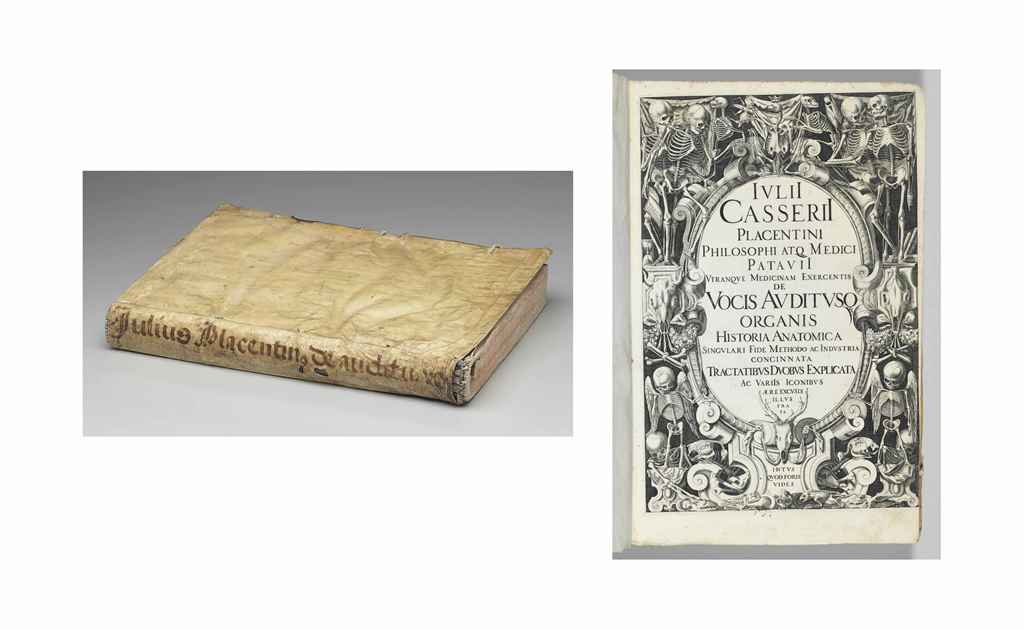FABRICI, Girolamo (ca 1533-1619). De venarum ostiolis . Padua: Lorenzo Pasquato, 1603. 2 o (388 x 266 mm). 13 leaves. One double-page and 7 full-page engraved illustrations; printer's woodcut device on title, ornamental woodcut initials, head- and tail-pieces. (Title with lower and foremargins renewed and with patch in lower margin, double-page plate with foremargins and lower margins renewed with extreme outer portion of image supplied in facsimile, plate 4 slightly cropped at bottom, some show-through of engravings, several illustrations cropped to or within plate mark.) Modern boards. FIRST EDITION of the first systematic study of the structure, distribution and position of the venous valves. Although the valves of the veins had been observed previously by G.B. Canano and Amato Lusitano, Fabrici studied them anew on the basis of his own observations. Perhaps because he analyzed anatomical structures in terms of their purpose, he interpreted the function of the valves as slowing down the influx of blood in order to distribute it more evenly to the various parts of the body. Although Fabrici's analysis was in part erroneous, De venarum ostiolis became his most influential work, in that it inspired his student, William Harvey to conceptualize the circulation of the blood. Fabrici's plate illustrating the valves of the arm was the model for the plates illustrating Harvey's De motu cordis . Garrison-Morton 757; Grolier Medicine 27B; NLM/Krivatsy 3831; Norman 750; Waller 2886.
FABRICI, Girolamo (ca 1533-1619). De venarum ostiolis . Padua: Lorenzo Pasquato, 1603. 2 o (388 x 266 mm). 13 leaves. One double-page and 7 full-page engraved illustrations; printer's woodcut device on title, ornamental woodcut initials, head- and tail-pieces. (Title with lower and foremargins renewed and with patch in lower margin, double-page plate with foremargins and lower margins renewed with extreme outer portion of image supplied in facsimile, plate 4 slightly cropped at bottom, some show-through of engravings, several illustrations cropped to or within plate mark.) Modern boards. FIRST EDITION of the first systematic study of the structure, distribution and position of the venous valves. Although the valves of the veins had been observed previously by G.B. Canano and Amato Lusitano, Fabrici studied them anew on the basis of his own observations. Perhaps because he analyzed anatomical structures in terms of their purpose, he interpreted the function of the valves as slowing down the influx of blood in order to distribute it more evenly to the various parts of the body. Although Fabrici's analysis was in part erroneous, De venarum ostiolis became his most influential work, in that it inspired his student, William Harvey to conceptualize the circulation of the blood. Fabrici's plate illustrating the valves of the arm was the model for the plates illustrating Harvey's De motu cordis . Garrison-Morton 757; Grolier Medicine 27B; NLM/Krivatsy 3831; Norman 750; Waller 2886.









Try LotSearch and its premium features for 7 days - without any costs!
Be notified automatically about new items in upcoming auctions.
Create an alert